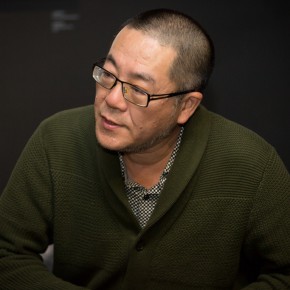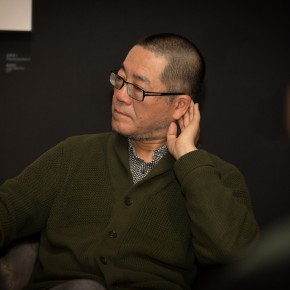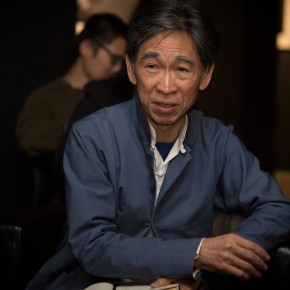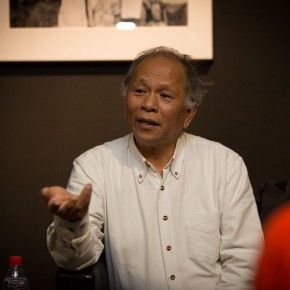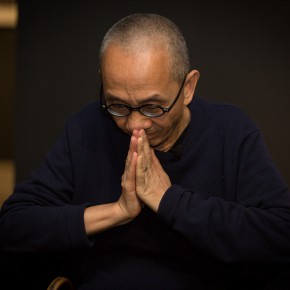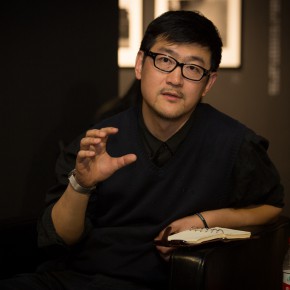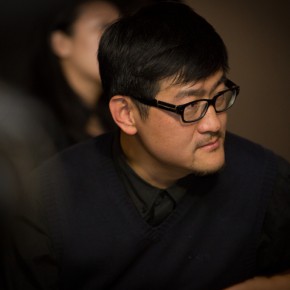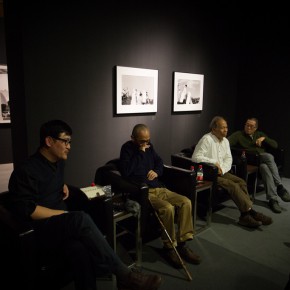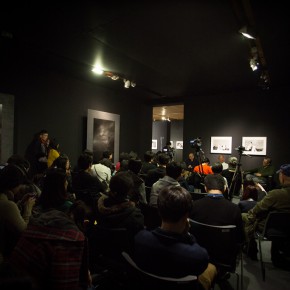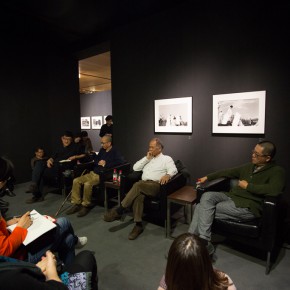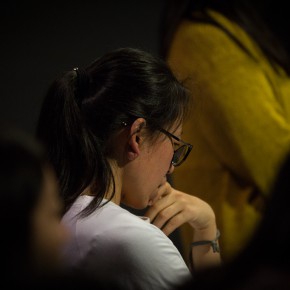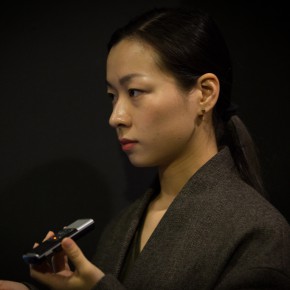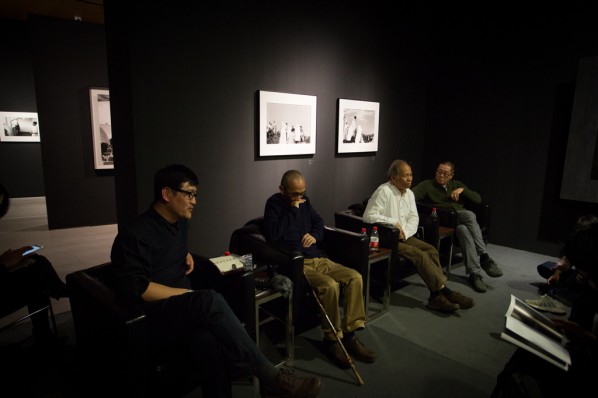
On March 26, 2015, on the occasion of the opening of “Won’t Somebody Bring The Light”, the artist Tsun-shing Cheng, the photographer Juan I-Jong from Taiwan, Wang Huangsheng, Director of CAFA Art Museum, curator Tsai Meng and Johnson Tsong-zung Chang, founder of Hanart TZ Gallery gathered in the exhibition hall on the 2nd floor of CAFA Art Museum, to hold a cultural dialogue which was divergent from the exhibition, talking about the relationships between photography and ethics, society, aesthetics, and technology.
Tsun-shing Cheng’s photography subtly expresses the hidden people and things of everyday life, observing and presenting the worldview of the basis of society, with a thick cultural strength. Visiting the exhibition in the gallery, the viewer has a deep sense of time, with an alternative sense of history. Through a not so deep understanding of Tsun-shing Cheng’s works, Wang Huangsheng thought his camera had a position, directly hitting society and humanity, directly hitting the emotional objects; at the same time his camera was used in an ethical way, using the camera to perceive the photographer’s observation of society, and also to perceive the subject’s thought on society and life.
Juan I-Jong is a famous humanistic photographer from Taiwan. Juan I-Jong, received a invitation from Tsun-shing Cheng’s photography exhibition when he worked in the ECHO journal years ago, although Cheng was unknown at that time, Juan was very interested in his work, the photography tried to express something but refused a clear expression, while people commonly pursued beauty in photography, the discovery of emotions was seen in Cheng’s photography, guiding people to return to discover the people, things and items behind the photos again. Then Juan I-Jong served as the editor of “The New Comers of Contemporary Photography”, Tsun-shing Cheng gave Juan a photography catalogue of Cindy Sherman. Cindy Sherman is well known in today’s world of photography and art, and she is the key to improving conceptual photography to the height of art. When she was just a newcomer, Cheng discovered her quality, so Juan I-Jong extremely admired his vision,and they became good friends. For Tsun-shing Cheng’ s works, Juan I-Jong said they were complex, and difficult to understand, and even he couldn’t understand Cheng’s comments about himself, and the complex situation was full of uncertainty revealing Taiwan without any explanation. At the same time, Juan I-Jong said that, photography was not only a record for Tsun-shing Cheng, but also a way of viewing and seeing the shared relationship between photography and existence, society, aesthetics and ethics. As for this exhibition entitled “Won’t Somebody Bring The Light”, Juan thought it was a true description of the inner state of Tsun-shing Cheng.
Tsun-shing Cheng introduced the fact that the exhibition created asituation for the “voices of the dead”, it was also a discussion on “waiting”, “disappearing”, “death”, and other situations, and most of the exhibited works took burial ceremonies and bus stations as the theme, referring to a kind of separation and waiting itself. Tsun-shing Cheng admitted it was the life, a fast moving train on a one-way track, quickly or slowly seeing the scenery on the way, it showcases the scenery which he saw during the train of life which is the defragmentation of his experiences and time. The exhibitionis through “Won’t Somebody Bring The Light” able to showcase the open attitude of the individual and the work, although he is as dark as the situation created by the exhibition hall,as a cultural omnivore, he is willing to mutually play the role of the “being” of the “latecomer”. He also hoped the exhibition finishes the combination of silver halide and new digital technology, to achieve communion and harmony, and become the shared theatre.
For the work of Tsun-shing Cheng, Tsai Meng said it built the aura of literati feelings, while it was also “entertainment” for the photographer himself, reaching a comfortable state in the darkness, and it was also in line with Chinese cultural tradition,being a creative way for Chinese “literati painting”. When it came to the topic of photographic technology, although digital technology was thriving at present, silver halide was still the basis of photography aesthetics and the foundation ofthe building of awareness, the digital cultural traits and the aesthetic features were generated so it was still an age which was alternated by digital and silver halide.Johnson Tsong-zung Chang finally joined the discussion, he said that, of all contemporary photographers Tsun-shing Cheng was the most difficult to understand, but also one of the most important ones.Tsun-shing Cheng’s works were mainly through the element of “death” in this exhibition, to establish a kind of new knowledge on birth and death, building an ethical order that was beyond the boundary of birth and death, and it also constructed the order of “rites”again. Tsun-shing Cheng finally added the speech of Johnson Tsong-zung Chang, and he talked about the difference between and ethical levels of the rites of “The Book of Rites”, the rites of the “Rites of Zhou” and the Western rites.
Tsun-shing Cheng is a photographer and scholar with a profound background in the philosophy of law and debate, and his photography exhibition “Won’t Somebody Bring The Light” is on show on March 27 atgallery A on the 2nd floor at CAFA Art Museum.
Text by Zhang Wenzhi, Photo by Wei Wei/CAFA ART INFO
Translated by Chen Peihua and edited by Sue/CAFA ART INFO


